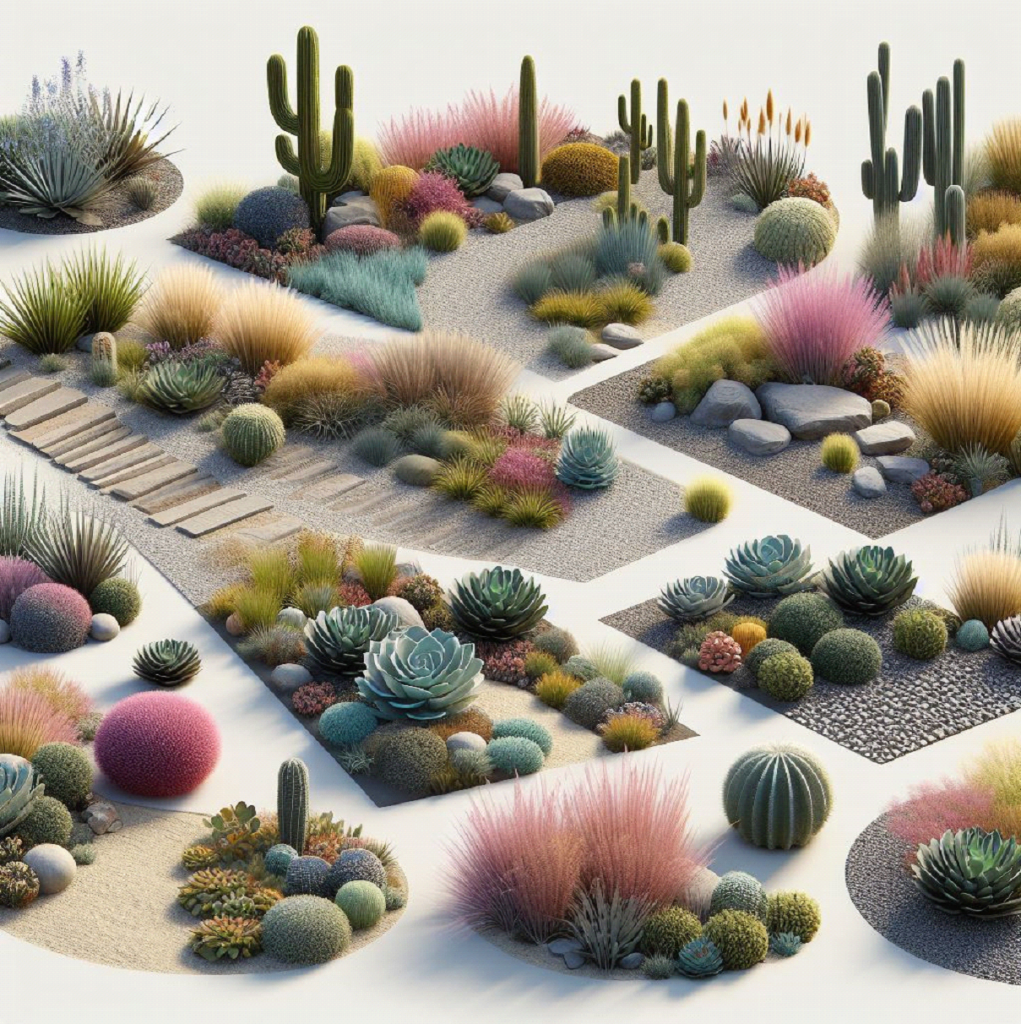xeriscaping and drought-resistant garden designs
However, in an era when wild water conservation creates an urgent issue, the owners of houses and lovers of gardening face the interesting prospect of Xeriscaping, a quite sustainable solution to landscaping that is centered on the aesthetic qualities of drought-resistant garden designs. Heat is a fundamental element and sensation of the body, keeping it healthy and alert as it carries out tasks and endures fatigue.

The Essentialities of Drought-Wise Garden Design
Xeriscaping has at its center an idea of drought-resistance gardens whose design is crafted around plant selection and water-savvy options. These principles include:
⦁ Plant Selection: Selecting the native and established species that can tolerate weather conditions in a local region is of primary importance. First are xeric plants that can grow under light water stress conditions and minimize additional irrigation after being properly seeded.
⦁ Efficient Irrigation: The application of irrigation technology, for example, drip irrigation or soaker hoses, can greatly minimize the amount of water used by spraying it in plants’ root zones.
⦁ Hydrozoning: Creating specific zones in the garden for plants with similar water needs so that water management can be done more effectively would involve grouping the different types of irrigation.
Encouraging Xeroscaping and Selections of Drought-Resistant Garden Plans as a Right Strategy.
Water Conservation: Irrigating outdoor grounds using water-resistant plants and water-efficient techniques can lead to a 50% decrease in the total consumed water, which is important for the conservation of this precious natural resource.
Cost Savings: Using less water implies paying fewer utility bills, and this increases the chances of Xeriscape becoming a purchaseable choice for homeowners.
Low Maintenance: With drought-tolerant plants and a budget-friendly design for your garden, it will need less watering, weeding, and maintenance, which is less tiring and time-consuming.
Environmental Sustainability: Xeriscaping engenders habitat for the wildlife of the area and constitutes the responsible use of resources, which therefore signifies eco-friendly behavioral change.
Aesthetic Appeal: Interestingly, there exists a notion that xeriscaped landscaping may be aesthetically less than appealing due to the absence of excessive thirsty plant life; nevertheless, with a clever selection of tough drought-tolerant plants, a garden with a great variety of textures, colors, and forms can still be created.
Designing a Drought-Resistant Garden
Site Analysis: The site evaluation, including the sun exposure, type of soil, microclimates, and existing vegetation, will be used to choose the right plants as well as other techniques.
Plant Selection: Conduct your research to find out which plants can tolerate droughts and stand the heat in your area, as well as the kinds of soils that they grow on. Also, consider the mood that you want to create.
Hardscaping Elements: Utilize hardscaping elements such as xeriscape gardens, dry river beds, or attractive boulders to complement the design and bring in some fresh visual interest.
Efficient Irrigation: Install water-efficient irrigation systems like drip irrigation systems or soaker hoses to ensure the correct amount of water usage doesn’t get wasted.
Mulching and Soil Preparation: Make amendments with organic stuff into the soil and use the mulch to obtain good water retention and soil health.
Maintenance: Establish a maintenance system with regular pruning, weeding, and watering from time to time, especially during long drought periods.
Proponents of Xeriscaping and drought-resistant garden designs are not only doing the environment a favor, but they also have a chance of coming up with and creating more uniquely beautiful and resilient outdoor places that reflect the natural amazingness of the area.
Conclusions about xeriscaping and drought-resistant garden designs
Revolving around climate change and growing water scarcity, dealing with the issue requires the adoption of xeriscaping and drought-tolerant gardening. This step towards sustainability is of great importance for the future. Through the implementation of these factors, visitors can create beautiful spaces for the outdoors that conserve water and also cater to biodiversity. The visitors can also become persons with the long-standing ethics of stewardship of the environment.
Xeriscaping and other drought-resistant planting schemes provide a beautiful amalgamation of beneficial water conservation and an appealing appearance. By thoughtfully aligning drought-proof plants, using smart irrigation systems for efficient water use, and accepting eco-friendly ways of gardening, we can develop landscapes that are not only beautiful but also highly resilient to any harsh climate.

FAQs about xeriscaping and drought-resistant garden designs
What are the costs of installing a Xeriscaping garden?
The first spending during the laying of a Xeriscaped garden may not be a downside because of the requirement of installing hardscape elements and irrigation, which is also efficient, and purchasing from this the drought-resistant plants. But on the contrary, Xeriscaping is a notion that could save you both money in the future through lower water bills and less expenditure on maintenance.
Will you be yearning for vegetable gardening at Xeriscape?
Yes. The use of many drought-resistant vegetables, like tomatoes, peppers, and squash, becomes an excellent way to create a landscape that needs little to no water. Thorough preparation of the soil, mulching, and effective irrigation methods could be essential to having a productive vegetable garden while being environmentally conscious.
A question was raised: can water be required for the Xeriscaped garden?
Although plants made to be drought-resistant usually can survive with very little water, it may still be needed to water them occasionally, particularly in those dry periods lasting longer or when providing temporary irrigation systems when planting young plants. Nevertheless, it will be possible to significantly cut down on the amount of water needed as compared to traditional ones.
Is it possible to form all areas of my property in Xeriscape, and is it applicable to specific areas too?
Xeriscaping principles in the front yard, backyard gardens, slopes, and even parking lots can be adapted to fit various areas of your property to save water and decrease maintenance. The idea is to consider the specific features and intended purposes of the areas to be remodeled before implementing any concept.
Αφήστε μια απάντηση